Genre(s) Shooting gallery Initial release date 1987 Mode Single-player video game | Cabinet Upright | |
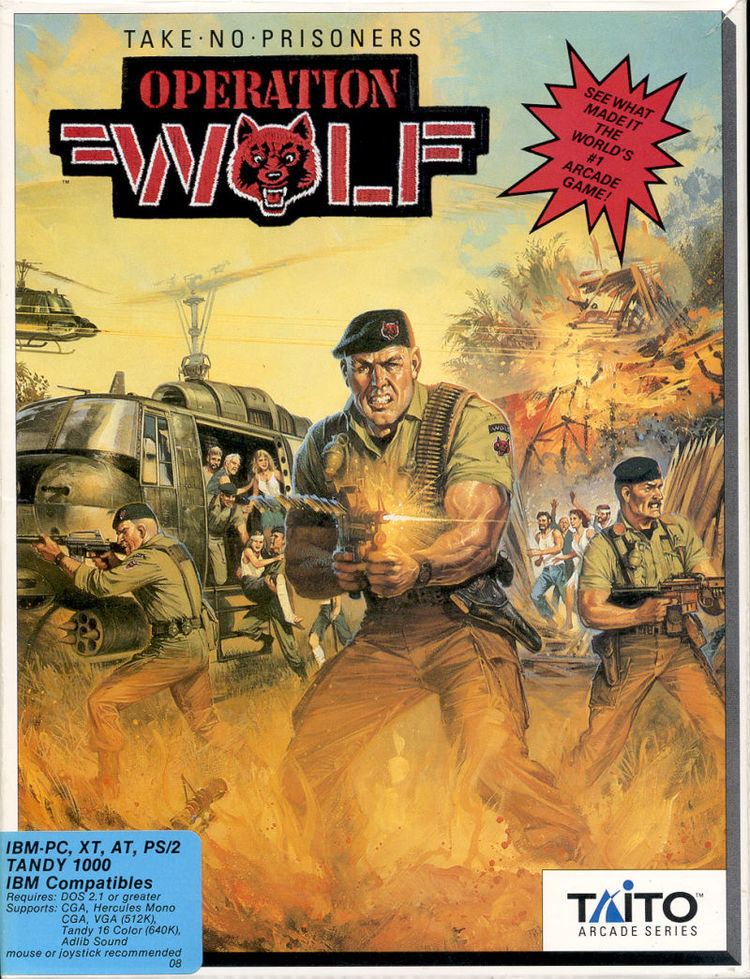 | ||
CPU MC68000 (@ 12 MHz)Z80 (@ 4 MHz) Sound YM2151 (@ 4 MHz)(2×) MSM5205 (@ 384 kHz) Display Raster, 320 × 240 pixels (Horizontal), 8192 colors Similar Taito games, Light gun games, Other games | ||
Operation wolf arcade version single credit
Operation Wolf (オペレーションウルフ, Operēshon Urufu) is a one-player shooter video game made by Taito in 1987. It spawned three sequels: Operation Thunderbolt (1988), Operation Wolf 3 (1994) and Operation Tiger (1998).
Contents
- Operation wolf arcade version single credit
- Operation wolf arcade 1987 video game years history
- Gameplay
- Home conversions
- Reception
- References
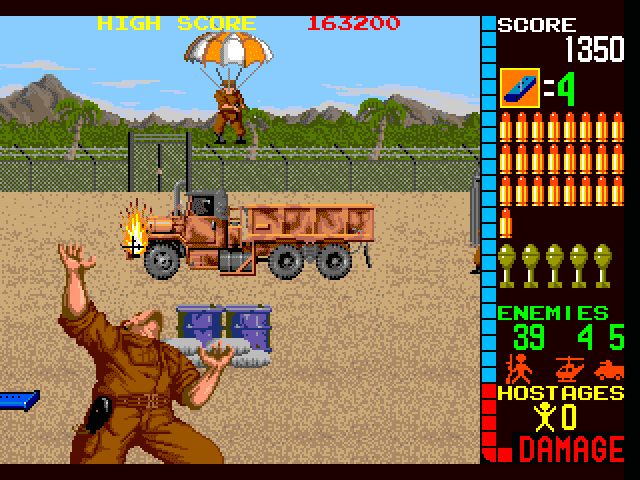
Operation wolf arcade 1987 video game years history
Gameplay
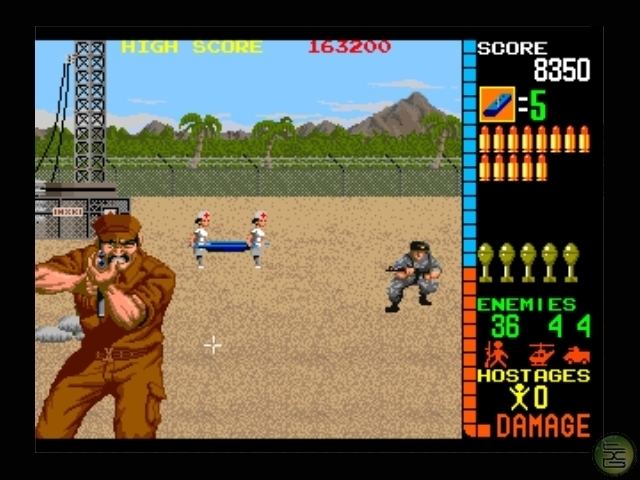
The player takes the role of Special Forces Operative Roy Adams. The object of the game is to rescue the five hostages in the concentration camp. The game is divided into six stages. Completion of each stage advances the story. For example, upon completing the Jungle stage, an enemy leader is interrogated and the location of the enemy's concentration camp is found. This was one of the first shooter games to feature a storyline.
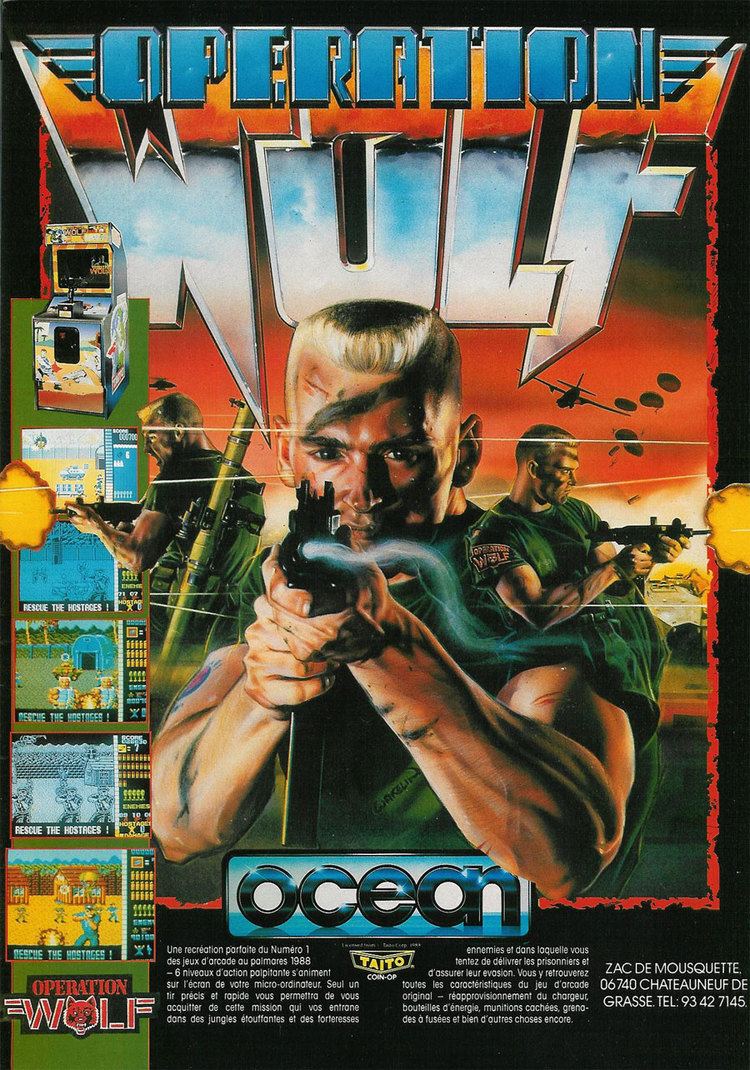
The game utilized an optical controller housed inside a gun assembly scaled after and which bore a strong resemblance to the Uzi submachine gun. This, in turn, was mounted on top of a square base covering the pivot shaft which allowed players to swivel and elevate the "gun". A geared motor inside the casing simulated the recoil felt by the player when they "fired" the weapon at in-game targets.
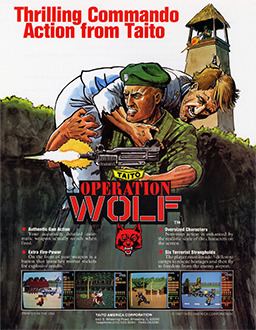
In order to complete each stage, the player must shoot as many soldiers, armored cars, helicopters, and boats as the game requires. Soldiers can throw hand grenades and knives, and vehicles can shoot missiles and launch rockets. The player's ammunition and grenades are limited, but can be stocked up by shooting barrels and crates or by shooting animals such as chickens and pigs. Occasionally a high-powered machine gun power-up appears, allowing the player's gun to have unlimited ammo and an increased rate of fire for 10 seconds.
There are six stages in the game:
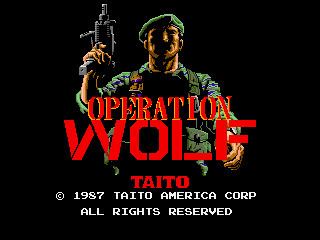
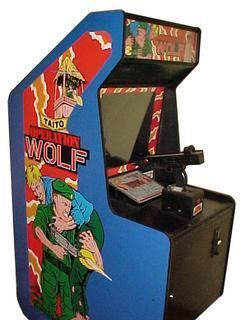
When the language of the game is set to English, the six stages are always in this order, meaning that the effects of the first two stages are not obvious and that the stages always have the same number of enemies between operations. When the language of the game is set to Japanese, only the first four stages are initially available and the player may freely choose among the incomplete stages; this allows for more situation strategy based on the player's progress.
The player has a damage bar that increases each time he is hit. The damage bar also increases if a civilian or hostage is shot. Energy boost items randomly appear which, if shot, decrease damage by five points. In addition, the player recovers a large amount of damage after completing the Village stage, and a small amount after completing each of the others. If the damage bar fills completely or the player runs out of ammunition and grenades, the game ends.
Home conversions
One of the most ported arcade games of all time, it has seen releases on the Amstrad CPC, DOS, the NES, the Master System, the FM Towns, and the PC Engine. Most of these ports lack any kind of light gun support (with the exceptions of the NES, Master System, and the ZX Spectrum, which featured Magnum Light Phaser support) and must be played with a keyboard or a controller. The box for the Master System version features promotional art from Operation Thunderbolt.
In 2005, Operation Wolf was released on the Xbox, PlayStation 2, and Microsoft Windows as part of Taito Legends; however, light gun support is unavailable. On February 4, 2008, the NES version of Operation Wolf was released on the North American Wii Virtual Console. Whereas the NES version allowed NES Zapper support, the VC re-release does not feature any kind of light gun support (including the Wii Remote's pointer functions), making the game only playable with the standard controller mode.
Reception
The game was commercially successful. On the Coinslot dedicated arcade game chart, it was number four, behind Street Fighter, Continental Circus, and WEC Le Mans. On the Spectrum sales charts, it was number two, behind RoboCop, which was number one every month for most of the year.
The game was also critically acclaimed. It won several awards at the 1989 Golden Joystick Awards for 1988, including overall Game of the Year (8-bit) as well as Best Coin-Op Conversion (8-bit) and Best Coin-Op Conversion (16-bit). Sinclair User gave it the "Over The Top Game of 1988" award, for the "shooting game most likely to push you over the edge" in 1988. It was later voted number 26 in the "Your Sinclair Readers' Top 100 Games of All Time" poll.
